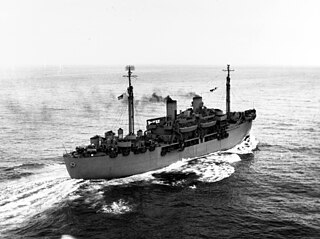
USS Gilliam (APA-57), named for Gilliam County in Oregon, was the lead ship in her class of attack transports serving in the United States Navy during World War II.
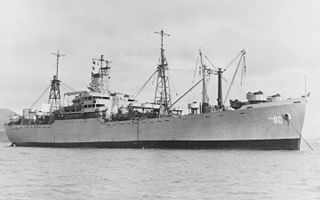
USS Whiteside (AKA-90) was an Andromeda-class attack cargo ship named after Whiteside County, Illinois. She served as a commissioned ship for 13 years and 4 months.

USS Aurelia (AKA-23) was an Artemis-class attack cargo ship. She served as a commissioned ship for 17 months. The name is Latin and means the golden one.

USS Artemis (AKA-21) was an Artemis-class attack cargo ship named after the asteroid 105 Artemis, which in turn was named after the Greek goddess Artemis. She served as a commissioned ship for 2 years and 4 months.

USS Haskell (APA-117) was the lead ship of her class of attack transports, built for the United States Navy during World War II. She was of the VC2-S-AP5 Victory ship design type. Haskell was named for the Haskell Counties of Kansas, Oklahoma, and Texas.
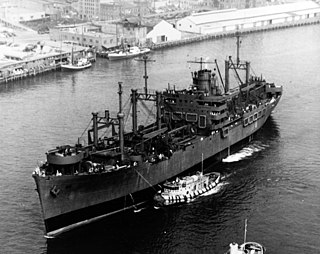
USS Sumter (APA-52) was a Sumter-class attack transport that served with the United States Navy from 1943 to 1946. She was subseqently sold into commercial service and was scrapped in 1978.

USS Bolivar (APA-34) was a Bayfield-class attack transport in service with the United States Navy from 1943 to 1946. She was then sold into commercial service and was scrapped in 1973.

USS Doyen (APA-1) was a Doyen-class attack transport in service with the United States Navy from 1943 to 1946. She was scrapped in 1973.
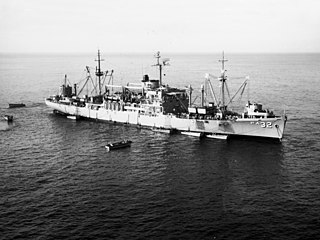
USS Calvert (APA-32) was a Crescent City-class attack transport that served with the United States Navy during World War II and the Korean War. In addition to her ten battle stars, Calvert was awarded a Navy Unit Commendation.

USS Feland (APA-11) was a Doyen-class attack transport in service with the United States Navy from 1943 to 1946. She was scrapped in 1964.
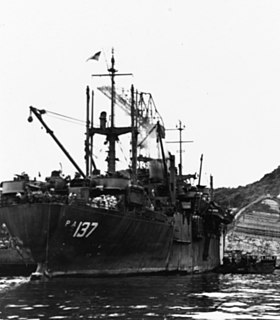
USS Bowie (APA-137) was a Haskell-class attack transport in service with the United States Navy from 1944 to 1946. She was scrapped in 1973.
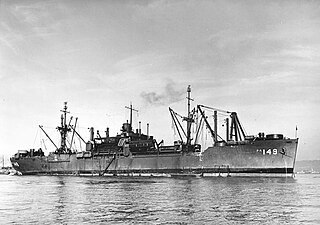
USS Audubon (APA-149) was a Haskell-class attack transport in service with the United States Navy from 1944 to 1946. She was scrapped in 1973.

USS Edgecombe (APA-164) was a Haskell-class attack transport in service with the United States Navy from 1944 to 1946. She was scrapped in 1987.

USS Kingsbury (APA/LPA-177) was a Haskell-class attack transport in service with the United States Navy from 1944 to 1946. She was scrapped in 1983.

USS Custer (AP-85/APA-40) was a Bayfield-class attack transport in service with the United States Navy from 1943 to 1946. She was sold into commercial service in 1948 and was scrapped in 1973.

USS Banner (APA-60) was a Gilliam-class attack transport that served with the United States Navy from 1944 to 1946. She was scuttled in 1948.

USS Carteret (APA-70) was a Gilliam-class attack transport that served with the United States Navy from 1944 to 1946. She was sunk as a target in 1948.

USS Rockwall (APA-230) was a Haskell-class attack transport in service with the United States Navy from 1945 to 1947 and from 1951 to 1955. She was scrapped in 1984.

USS Sheridan (APA-51) was an Ormsby-class attack transport that served with the US Navy during World War II.

USS Harris (APA-2) was an Emergency Fleet Corporation Design 1029 ship launched for the United States Shipping Board (USSB) on 19 March 1921 by Bethlehem Shipbuilding Corporation, at Sparrows Point, Maryland as Pine Tree State. After operation by commercial lines for the USSB, during which the ship was renamed President Grant and operated commercially until laid up in the late 1930s.




















